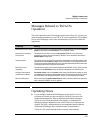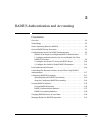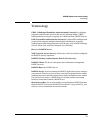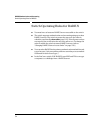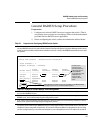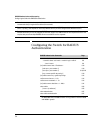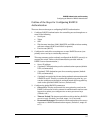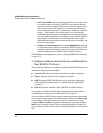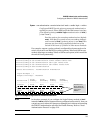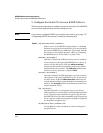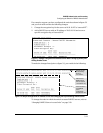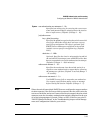
5-7
RADIUS Authentication and Accounting
Configuring the Switch for RADIUS Authentication
Outline of the Steps for Configuring RADIUS
Authentication
There are three main steps to configuring RADIUS authentication:
1. Configure RADIUS authentication for controlling access through one or
more of the following
• Serial port
•Telnet
•SSH
• Web browser interface (2600, 2600-PWR, and 2800 switches running
software releases H.08.58 and I.08.60 or greater)
• Port-Access (802.1X)
2. Configure the switch for accessing one or more RADIUS servers (one
primary server and up to two backup servers):
Note This step assumes you have already configured the RADIUS server(s) to
support the switch. Refer to the documentation provided with the
RADIUS server documentation.)
• Server IP address
• (Optional) UDP destination port for authentication requests (default:
1812; recommended)
• (Optional) UDP destination port for accounting requests (default:
1813; recommended)
• (Optional) encryption key for use during authentication sessions with
a RADIUS server. This key overrides the global encryption key you
can also configure on the switch, and must match the encryption key
used on the specified RADIUS server. (Default: null)
3. Configure the global RADIUS parameters.
• Server Key: This key must match the encryption key used on the
RADIUS servers the switch contacts for authentication and account-
ing services unless you configure one or more per-server keys.
(Default: null.)
• Timeout Period: The timeout period the switch waits for a RADIUS
server to reply. (Default: 5 seconds; range: 1 to 15 seconds.)
• Retransmit Attempts: The number of retries when there is no server
response to a RADIUS authentication request. (Default: 3; range of 1
to 5.)



